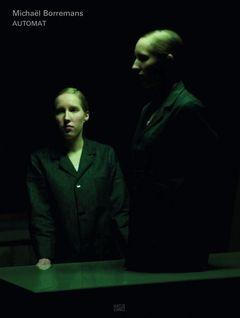mono.kultur 31 Michaël Borremans “Shades of Doubt”

Michaël Borremans recently found a new way to kick off a productive day: One of his former assistants used to enjoy her morning coffee with a hint of vodka and some maple syrup, just a tiny, tiny bit of vodka, like 1:10, and then some syrup to sweeten it, and now the Belgian artist has also made it a habit to rely on the nameless drinks subtle power to open up your blood vessels. Even so, his days work still amounts to no more than what he calls low production. Low it might seem particularly to speculators who want to make easy money on the recent hype around Borremans haunting paintings, drawings, and films. But low he shouldnt call it, as he knows all too well that he is very self-censoring and will only let the best possible work, sometimes after multiple attempts and different versions, leave his combined home and workplace in Ghent. Low production in his case simply means high standards.
These high standards have, over the last decade, attracted more and more people to his work; nowadays, they even come to his house, unannounced, trying to snatch up a piece of the pie. But Michaël Borremans is an artist who is extremely devoted and loyal to his galleries, to his ideas he calls ghosts, to his themes, to his entire vision and approach. Hes a man who needs his pencil like he needs a smoke, who takes to drawing when others write in their diaries, and who treats his brushes and canvasses like a lover, going back and forth between moments of intense attraction and temporary loathing. For an artist who doesnt believe in free will or individuality, hes quite a personality.
However, success didnt come overnight for Michaël Borremans, who was born in Geraardsbergen, one of the countrys oldest towns, in 1963. A graduate of the Sint-Lucas Hogeschool voor Wetenschap & Kunst in Ghent, he worked as a teacher at Ghents Stedelijk Secundair Kunstinstituut for a few years, and only decided to focus on his own artistic output when already in his thirties. Even before he had big solo exhibitions in New York (David Zwirner), Paris (La Maison Rouge), Stuttgart (Württembergischer Kunstverein), Tokyo (Gallery Koyanagi), Amsterdam (De Appel) or Antwerp (Zeno X Gallery), before the Queen of Belgium requested some of his work for the Royal Palace in Brussels, before novelists like Sven Hillenkamp (Fußabdrücke eines Fliegenden, 2012) or bands like dEUS (Vantage Point, 2008) asked to have their works illustrated with his signature still lifes and figurative close-ups, Borremans was never afraid to see things through and to work hard nor to be hard, on himself and his own work.
Whereas in his small-scale drawings, his tekeningen, he often creates larger scenarios, clinical and uncanny situations charged with deformity, unequal power relations and oppression, his paintings and more recent minimalist film works mostly focus on human beings devoid of individuality, free will or clear missions in life. The futile tasks carried out by the generic, universal types he initially found and borrowed from old magazines and other media have by now made way for intricately planned and highly detailed scenarios the trained photographer shoots first with actual models and then translates into the unique figurative language he employs as a painter. Charged with the same surreal, unsettling and almost Lynchian quality (Borremans Trickland is especially reminiscent of Benjamin Hornes futile endeavors), his source materials, whether found or not, are the starting point for an open-ended dialogue with his artistic forbears, a reflection on the various traditions of his media, and an ongoing quest to find new ways to create illusions. Forcing the viewer to deal with philosophical questions about rituals of interpretation and meaning, the more layers and dimensions he adds, the more things become unclear, and painfully so. It is this lack of clarity, this perpetual state of suspense that makes his work endlessly captivating.
Michaël Borremans is an artist who is extremely focused, concentrated and refreshingly serious about what he does, with a very consistent vision thats been apparent throughout all of his work from the mid-90s until today. Self-taught although he calls Baroque portrait master Diego Velázquez his teacher he keeps returning to the human figure and the sometimes unbearable weight attached to human existence: the fears, the flaws, the futility, the terror, the turmoil, and the tragedy. Luckily, all of this weight is ultimately counterbalanced by a heavy, bittersweet chuckle and a thick puff of smoke and when it lifts, this cloud of smoke, Borremans is already gone, off to create the next set of illusions, in his free hand, ideally, a glass of champagne.
Out of stock
Out of stock



